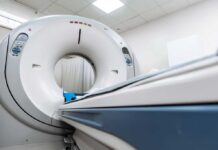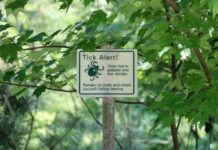
Could walking just 14 steps more per minute be the secret to aging like a fine wine?
At a Glance
- Boosting walking pace by 14 steps per minute can improve physical function in seniors.
- Cadence is an objective, actionable target for older adults and clinicians.
- Study findings are robust and peer-reviewed, ensuring reliability.
- Significant implications for public health policy and senior care.
Scientific Evidence of Speedy Strolls
In a world where the aging process seems inevitable, a groundbreaking study from the University of Chicago claims to have found a simple hack to defy time. The study, published in PLOS ONE, reveals that increasing your walking pace by just 14 steps per minute can significantly enhance your physical function. The intervention was surprisingly straightforward: participants aged 60 and older took part in thrice-weekly walks, with some sauntering at a leisurely pace and others stepping it up to a brisk “as fast as safely possible” speed.
Watch a report: Boosting walking pace by 14 steps per minute
The results? A staggering 65% of the fast walkers showed meaningful improvements in a six-minute walk test, compared to 39% of their casual counterparts. The secret sauce appears to be reaching about 100 steps per minute, a cadence that combines the charm of a Sunday stroll with the zest of a Saturday night dance-off.
The Stakes Are High, But the Steps Are Low
For those who think this is just another fitness fad, think again. Frailty affects up to 16% of Americans over 65, with a whopping 44% considered “prefrail.” The stakes are indeed high, as frailty is linked to higher risks of falls, hospitalization, and loss of independence. The study’s simplicity and accessibility make it a game-changer for older adults who wish to maintain their quality of life without enrolling in strenuous gym classes or buying into expensive exercise programs.
Moreover, the study’s implications are not just limited to individuals. Healthcare providers now have an evidence-based metric—steps per minute—to guide exercise prescriptions for frail seniors. This could pave the way for new clinical guidelines that stress not just movement, but the tempo of that movement.
Broader Impacts and Industry Innovations
The potential ripple effects of these findings could be vast. Imagine the healthcare savings from reduced fall injuries, hospitalizations, and long-term care. Public health policies might soon encourage older adults to keep a metronome handy, ensuring they hit that magical 100 steps per minute mark. And let’s not forget the fitness technology sector, which could see a boom in demand for wearable devices and apps that track walking cadence.
Retirement communities might also jump on the bandwagon, incorporating cadence-based walking programs as standard offerings. This could lead to a social shift where older adults, once sidelined, become the epitome of fitness goals, strutting around with the confidence of someone who’s just discovered the fountain of youth.
Expert Insights and Future Directions
Dr. Daniel Rubin, the study’s lead author, asserts that even modest increases in walking cadence can yield significant benefits. Walking faster is not just a way to outpace Father Time; it’s a scientifically backed method to enhance longevity. Experts praise the study for its practical, actionable recommendations, filling a long-standing gap in exercise guidance for older adults.
While the benefits are clear, some caution is advised. Not all frail seniors can safely increase their pace, and interventions should be tailored to individual capabilities and medical conditions. Nonetheless, the study’s publication in a reputable journal and its widespread corroboration by science and health news outlets lend it considerable credibility.


















